Brian Meert's Blog, page 18
December 5, 2023
How Does Amazon Fresh Work?
Are you thinking, “How does Amazon Fresh work?”
If you think, “How does Amazon Fresh work?” it is a breakthrough in online grocery delivery services. It provides a seamless way for customers to get fresh produce, pantry staples, and more delivered right to their doorstep.
This article will explore what Amazon Fresh stores are and how they work.
What is Amazon Fresh?Amazon Fresh store is an online grocery delivery and pickup service Amazon offers its customers. It is designed to make your grocery shopping experience delightful without needing to walk out shopping at physical stores. This grocery delivery service allows you to order a wide range of fresh and local products from your home using the Amazon App.
How Amazon Fresh WorksThe following explains how Amazon Fresh works:
Sign up for Amazon Prime: Only Amazon Prime members can use Amazon Fresh grocery stores. If you’re not a member, sign up on the Amazon website.Browse and add items to your cart: As a Prime member, you can browse the wide range of available products. Add the items you need to your virtual shopping cart.Choose a delivery time: During checkout, choose a time that suits your schedule. Amazon Fresh offers various delivery options, including same-day delivery in some areas. Also, orders below $150 come with a delivery fee, while orders above that come with free delivery costs.Review your order: Take a moment to review your order. You can adjust quantities, add or remove items, and ensure everything looks good before proceeding.Place your order: Once satisfied with your selection, proceed to checkout. Amazon will guide you through the payment process, and you can choose your preferred payment method.Wait for delivery: An Amazon Fresh driver will bring your carefully packed groceries to your doorstep on the chosen delivery day.Optional add-ons: While checking out, you might come across optional add-ons like snacks, meal kits, or household items.Amazon Fresh pickup (optional): If you prefer to pick up your groceries, Amazon also offers a pickup option. Choose a pickup time and drive to physical Amazon fresh stores to get your groceries.Products Sold on Amazon Fresh Grocery StoresThe following are items you can buy on Amazon Fresh stores using your Amazon account:
Fresh produce.One of the highlights of Amazon Fresh is its selection of fresh fruits and vegetables. From crisped apples to juicy watermelons, you can find various seasonal produce sourced to ensure quality and freshness.
Quality meats.Amazon Fresh is good when it comes to meats. Whether you’re craving tender steaks, succulent chicken, or flavorful seafood, the platform provides several options to suit your taste preferences.
Dairy delights.You can say goodbye to last-minute milk runs as Amazon Fresh covers your dairy needs. You can stock up on your favorite dairy products online, from fresh milk and eggs to various cheeses and eggs.
Pantry staples.Do you need more pantry staples? Amazon Fresh offers an extensive selection of essential items like pasta, rice, canned goods, and more.
Snacks and beverages.Amazon Fresh is the best place to satisfy your snack cravings. Explore various snacks, from healthy options like nuts and dried fruits to indulgent treats like chocolate and chips. Also, Amazon stocks various beverages, including soft drinks, juices, and refreshing sparkling water.
Meal kits and Prepared foods.Amazon Fresh provides meal kits and prepared foods for those who want to skip the cooking process. These convenient options make it easy to enjoy a delicious and well-balanced meal without the hassle of extensive prep work.
ConclusionAmazon Fresh brings the supermarket to your fingertips, offering a convenient, time-saving solution for your grocery needs. Say goodbye to long lines and heavy grocery bags; let Amazon Fresh revolutionize how you stock up on essentials.
Are you planning an advertisement campaign on Amazon? Contact AdvertiseMint, an Amazon ad agency at 844.236.4686.
Frequently Asked QuestionsHow do I start using Amazon Fresh?To use Amazon Fresh, you need to be an Amazon Prime member. If you’re not a member, sign up on the Amazon website.
Can I choose a specific delivery time for my order?Amazon Fresh allows you to choose a delivery time that fits your schedule.
What if I’m unsatisfied with the freshness of the items I receive?Amazon Fresh has a freshness guarantee. If you’re not happy with the freshness of an item, you can contact Amazon Fresh customer support to request a refund or replacement.
Related ArticlesFacebook Retargeting: Reconnecting with Your Audience
Would you like to learn about Facebook Retargeting?
Staying connected with your audience is crucial in online advertising. Facebook retargeting is a powerful tool for staying connected with your target audience.
This blog will discuss the basics of Facebook retargeting and how it can benefit your business.
What is Facebook Retargeting?Facebook retargeting ads are a clever strategy that targets users who have previously interacted with your website or content. Imagine this: someone visits your online store, browses a few products, but leaves without making a purchase. With Facebook retargeting campaigns, you can subtly remind your website visitors about those products when they scroll through their Facebook feed.
How Facebook Retargeting Ad Campaign WorksThe following explains how Facebook retargeting ad campaigns work:
Pixel power.At the heart of Facebook retargeting is the Facebook Pixel, a snippet of code you place on your website. This pixel discreetly tracks the actions of visitors.
Visitor tracking.When someone visits your website and views a product, adds it to their cart, or makes a purchase, the pixel records this information. This data is then used to categorize visitors into different groups based on their behavior.
Tailored ads.Once your audience is segmented, you can create customized ads for each group. These ads will appear on your audience’s Facebook feed. These dynamic ads give them a gentle nudge to revisit your website and transform them from casual browsers to satisfied customers.
Benefits of Using Facebook Retargeting CampaignBelow are the advantages of Facebook dynamic retargeting ads:
Increased conversions.Targeting users who have already shown interest in your offerings makes you more likely to convert them into customers. They are already familiar with your brand, making them more receptive to your Facebook ad campaign messages.
Brand recall.Facebook retargeting keeps your brand fresh in the minds of potential customers. Regular appearances in their Facebook feed reinforce your brand, as they’re more likely to think of you when ready to purchase.
Cost-effective.Compared to some other advertising methods, Facebook retargeting ads can be cost-effective. Since you’re targeting a specific audience, your ad spending focuses on users more likely to engage and convert.
Easy Steps to Set Up Your Facebook Retargeting Ad CampaignThe following are easy-to-follow steps to set up a Facebook remarketing campaign:
Step 1: Install the Facebook Pixel.Here is how to install the Facebook Pixel:
Log in to your Facebook Ads Manager account.In Ads Manager, go to the “Events Manager” and find the “Pixels” tab.Click on “Add” to create a new pixel. Give it a name related to your business and website.You will receive a pixel code. Copy and paste this code into the header of your website.Step 2: Define your audiences.Follow the steps below to define your audience:
In Ads Manager, go to the “Audiences” section.Click on “Create Audience” and choose “Custom Audience.”Select “Website Traffic” to create an audience based on user interaction on your site.Define the criteria for your audience. You can target all website visitors, people who visited specific pages, or those who purchased.Step 3: Craft your ad.Below are procedures to craft your ad:
In Ads Manager, click on “Ad” to start the ad creation process.Choose the objective that aligns with your goals, such as “Conversions” or “Traffic.”Pick the custom audience you created earlier.Create a visually appealing ad with compelling images or videos. Craft engaging copy that encourages users to take the designed action.Step 4: Set your budget and schedule.Decide on your daily or lifetime budget. Set a schedule for when you want your ads to run. Also, choose how you want Facebook to optimize the delivery of your ads based on your campaign objective and launch your campaign.
ConclusionFacebook retargeting is a game-changer for online businesses looking to stay connected with their audience. Using the Facebook Pixel and creating compelling ads, you can transform casual browsers into loyal customers.
Would you like to run a Facebook retargeting ads campaign? Contact the top ad agency on Facebook.
Frequently Asked QuestionsWhat is Facebook Retargeting?Facebook Retargeting is a digital advertising strategy that allows businesses to reconnect with users who have previously interacted with their website or content.
How does Facebook retargeting work?Facebook retargeting works through the Facebook Pixel, a small code placed on a website. This pixel tracks user actions, such as page views or product clicks, and categorizes them into groups.
What are the benefits of using Facebook Retargeting?The benefits of using Facebook Retargeting include increased conversions, brand recall, cost-effectiveness, and personalization.
Related Blog PostsHow to Choose a Facebook Advertising Agency
December 4, 2023
Facebook Messenger Bots for Marketing
Would you like to learn about Facebook messenger bots for marketing?
One innovative tool that has revolutionized how businesses connect with their audience is Facebook messenger bots. Using Facebook messenger bots for marketing can help boost engagement, enhance customer experience, and drive conversations.
This blog will explore Facebook Messenger chatbots and how they can elevate your marketing strategy.
What is a Facebook Messenger Chatbot?A Facebook messenger bot is a 24/7 virtual assistant that interacts with your customers in real-time, answering queries, providing information, and making recommendations. These Facebook bots are automated chat systems integrated into the messenger platform, designed to streamline communication and enhance user experience.
The Differences Between Facebook Messenger Bots and Other BotsThe following are things that separate Facebook messenger bots from other bots:
Home on Facebook.Facebook messenger bots live right inside the Messenger app. Hence, it makes it easy to chat, ask questions, or get help without leaving the Facebook platform.
Chat-focused.While other bots may handle tasks like ordering food or setting reminders, Facebook messenger bots are chat-focused. They are perfect for quick chats, customer support, and engaging dialogues.
Personalization pros.Facebook messenger bots are excellent at getting to know you. They use the power of personalization to tailor messages based on your likes, preferences, and past interactions.
Instant interaction.Facebook Messenger chatbots are speedy responders. They are ready to jump into action instantly when users start a Messenger conversation.
Importance of Chatbots in Facebook Messenger MarketingBelow are the benefits of using Messenger bots for your Facebook ad campaigns:
24/7 availability.Imagine having a marketing team that never sleeps. Messenger chatbots are at your service 24/7, providing instant responses and keeping the conversation going even when your human team is unavailable.
Automated marketing campaigns.Launching a marketing campaign can be daunting, but not for smart marketers using Facebook messenger bots. These messenger bots automate marketing campaigns, from sending promotional messages to guiding users through a sales funnel.
Building a direct connection.Facebook marketing requires building a subscriber base, and Messenger bots make it easy. Smart marketers use these bots to build a direct connection with their audience within the Facebook Messaging app.
Steps to Create Facebook Messenger BotsBelow are the procedures for creating Facebook messenger bots:
Step 1: Know your bot’s mission.Ask yourself, what’s the purpose of your messenger bots? Is it for customer support, lead generation, entertainment, and engagement? Having a clear mission sets the stage for your bot’s success.
Step 2: Pick your bot platform.Choose a friendly platform that simplifies the bot-building process. ManyChat and Chatfuel offer easy-to-use interfaces that do not require coding.
Step 3: Design your bot’s personality.Your chatbot is the digital face of your brand, so let it reflect your personality. Decide whether the tone is causal, professional, or a mix. This personal touch makes the interaction with your audience more enjoyable.
Step 4: Craft conversational skills.Think of your bot as a friendly conversational partner. Anticipate what your users might ask and craft responses that keep the chat flowing smoothly. Doing this helps your bot become a conversational maestro.
Step 5: Test your bot.Before you put your chatbot on Messenger, put it through its paces. Test different scenarios, identify stumbling blocks, and refine your bot’s responses for a flawless user experience.
Step 6: Integrate with Facebook Messenger.You can integrate your chatbot seamlessly with Facebook Messenger to ensure it’s at the heart of user interactions.
Step 7: Keep an eye on Analytics.Once your chatbot is live and chatting away, you should monitor user interactions, gather feedback, and dive into analytics.
ConclusionFacebook messenger bots are a game-changer, offering a versatile tool for personalized engagement, customer support, and automated campaigns. Using these bots, you can create meaningful connections with your audience, drive conversations, and stay ahead of the competition. It is time to embrace the future of marketing with Facebook messenger bots.
Would you like to run a Facebook Messenger ads campaign? Contact the leading Facebook advertising agency.
Frequently Asked QuestionsWhat is a Facebook Messenger bot, and how does it help with marketing?A Facebook Messenger bot is a digital assistant that interacts with users through the Messenger platform.
Can a Messenger bot boost engagement with customers?Absolutely! Messenger bots offer instant responses, personalized interactions, and 24/7 availability.
How do Messenger bots contribute to customer support?Messenger bots can handle common queries, provide information, and guide users through troubleshooting.
Related BlogsDecember 3, 2023
The Best Times to Post on TikTok in 2024
Would you like to know the best times to post on TikTok in 2024?
TikTok users create and share short-form TikTok videos on a wide range of topics. You must know the best times to post on TikTok to increase your chances of reaching a larger target audience.
This guide will explore the best time to post on TikTok for maximum engagement.
What are the Best Times to Post on TikTok for Maximum Engagement?TikTok’s algorithm is a mystery, but nailing the timing of your posts can significantly boost your visibility. Below are the best TikTok posting times to get the most engagement:
Evenings and weekends.During the weekdays, from Mondays to Fridays, aim for 7:00 PM to 9:00 PM when people unwind after their day. On Saturdays and Sundays, posting content anytime throughout the day works well, especially in the afternoon and evening.
Lunchtimes.From Mondays to Fridays, posting your TikTok content around 11:00 AM to 1:00 PM can catch TikTok users during lunch breaks.
Mornings.Posting quality content on your TikTok account between 7:00 AM and 9:00 AM can catch early birds scrolling through their feeds.
Avoid peak times.Peak hours are between 3:00 PM and 6:00 PM. Avoid these times as there’s more competition, and your content might get lost.
Why It Matters to Post on TikTok at the Right TimeThe following are reasons why posting on TikTok at the right time matters:
Visibility.Posting when your global audience is active maximizes the chances of your videos surfacing on their “For You” page.
Peak engagement.Strategically timing your posts ensures more views, increasing likes, comments, and shares.
Beating the competition.Avoiding peak hours when everyone is vying for attention gives your content a better chance to shine.
Understanding your audience.Tailoring your posting schedule to match your target audience’s lifestyle fosters a deeper connection.
Crucial experimentation.Analyzing TikTok Analytics provides invaluable insights into when your audience is most active.
Building consistency and anticipation.Consistently posting at optimal times keeps your audience anticipating your content.
Global appeal and local timing.TikTok is a global platform, and the best time to post varies by region. Understanding your diverse audience’s Time zones and habits ensures a worldwide impact.
Ways to Use Multiple Best Times To Post Effectively on TikTokBelow are ways you can effectively use multiple best times to post on TikTok:
Know your audience’s location.Your followers may be scattered across the globe, so knowing their locations is important. Identify the primary region your audience belongs to, and note the time zone differences.
Create a posting schedule grid.Create a simple grid with days of the week across the top and time slots down the side. Fill in the grid with the best times of each region. This grid becomes your personalized posting schedule.
Utilize TikTok’s scheduling feature.TikTok has a nifty scheduling feature that allows you to plan your TikTok posts. You can set up your content to go live at different times, catering to multiple time zones.
Experiment with mixed times.If you have a global audience, you can experiment with posting at different times for a mixed approach. Rotate between morning, afternoon, and evening posts to cover various time zones throughout the week.
Leverage analytics for each region.Dive into TikTok analytics to understand the peak activity times for each region. Tailor your posting strategy based on the unique habits of your diverse audience.
Engage with global trends.Stay in the loop with worldwide TikTok trends. Capitalize on global challenges or themes to connect with followers from different time zones. Also, crafting content that transcends cultural boundaries ensures a universal appeal.
ConclusionWhile there are general guidelines for the best times to post on TikTok, you must tailor your strategy to your unique audience. By understanding your audience and staying consistent, you’ll increase your chances of reaching more users and boosting your TikTok presence.
You can contact AdvertiseMint, the top-tier TikTok ad agency to run an advertisement campaign on TikTok.
Frequently Asked QuestionsWhy does the timing of my TikTok posts matter?The timing of your TikTok posts matters because it can significantly impact your visibility and engagement.
What if my audience is in different time zones?If your audience spans multiple time zones, create a posting schedule considering geographical diversity.
Are there specific days that are better for posting on TikTok?Yes, the best days to post can vary, but weekdays increase engagement.
Related ArticlesDecember 2, 2023
33 Display Ad Examples That Are Finger Clicking Good

Creating display ads that effectively grab attention and drive conversions on the Google Display Network can be tricky.
We’ve all seen those blocky, boring banners that blend into the background. How do you make your ad stand out from the sea of mediocrity?
The solution lies in understanding what makes a great display ad “clickable.” And the best way to get that understanding is to study successful display ad examples.
In this article, I’ve put together 33 finger clicking good display ad examples across industries to inspire your next campaign. You’ll also learn the key elements of high-performing display ads.
Whether you’re new to display advertising or looking to refresh your creatives, the 33 eye-catching examples can help put you on the right path. And boost your return on ad spend (ROAS) significantly.
Without further ado, let’s dive in and get you inspired!
What Are the Key Elements of High-Performing Display Ads?So you want to create a display ad that grabs attention, drives clicks, and boosts your conversion rate? In promoting products and services, the key is to include these crucial elements below in your display ads:
A Striking VisualYour ad creative needs to shine brighter than the content around it. You should use:
 High-quality, relevant images or illustrations that pop
High-quality, relevant images or illustrations that pop Short, eye-catching video if budget allows
Short, eye-catching video if budget allows Vibrant colors and visual contrast
Vibrant colors and visual contrastAim for visuals that amplify your message and fit seamlessly into the surrounding content.
A Clear Value PropositionSpell out how your product or service solves your target audience’s needs simply and effectively.
 Outline the key benefits you provide
Outline the key benefits you provide Use friendly, conversational languageA Solid CTA Button
Use friendly, conversational languageA Solid CTA ButtonDon’t leave visitors guessing what to do next! Guide them with a clear call to action like “Shop Now” or “Learn More.”
 Use action-driven language
Use action-driven language Make sure the button looks clickable
Make sure the button looks clickableFollow these guidelines, and your display ads will be primed for clicks and conversions!
Now, let’s check out 33 remarkable display ad examples and why they work. From striking imagery to value propositions that resonate, these creatives check the right boxes as a key component of successful digital marketing campaigns.
As you browse, take note of tactics you can mimic to make your own ads more clickable. Steal ideas shamelessly – great artists borrow; truly great ones steal! 

Gusto provides a stat showing users are highly satisfied after using its software. The HR software provider claims to cut payroll time spent by half for companies and that customers speak highly of them.
The value proposition is straightforward – Gusto users stay happy. Gusto follows up with an appealing free trial call to action.
Gusto keeps its message simple and benefit-focused rather than branding-focused. The proposed value and trial ideas interest the target audience enough to try the software for themselves.
#2 Display Ad Example: Lumbar Liquidators

Lumber Liquidators used a great strategy here. They offer people the chance to preview renovations via an app.
It’s smart to make the app visualization the focus of the display ad.
People contemplating big renovations would want to preview the outcomes before engaging the company’s services. That attracts them to try the app, as the CTA button says.
#3 Display Ad Example: The Ridge

Big leather wallets strain backs and expose chip cards. This slim wallet that promises to boost safety with its RFID-blocking feature would appeal to many men who value safety and comfort.
The ad visually shows the wallet’s edge over a typical bulky one. A clear comparison in a display ad is one of the best ways to demonstrate the superior qualities of a product.
Viewers see the appealing difference and hit the ‘Shop Now’ button to order the slim wallet to replace their bulky ones.
#4 Display Ad Example: Santander
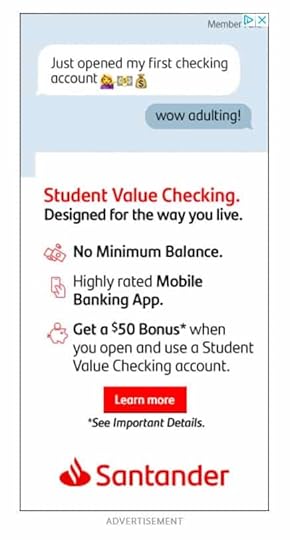
Santander used the ad space well without overcrowding it. The text chat draws youth, and the fancy bullet points clearly state the benefits for students – the target users.
The concise value checking account details would also appeal to the student group and get their clicks.
#5 Display Ad Example: PayPal

PayPal pitches premium business solutions as refreshingly simple. This motivates upgrades for current users and switches from rival services.
Familiar branding and colors attract eyes and encourage viewers to click through.
#6 Display Ad Example: Nike
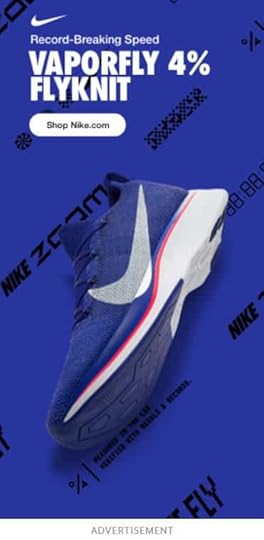
Nike display ads effectively showcase products visually while spotlighting unique features. For some items, this format lets the product’s physical qualities take center stage, supported by concise captions.
For this ad, minimal text works best for reaching the target users. The right product image speaks volumes.
#7 Display Ad Example: Chevy
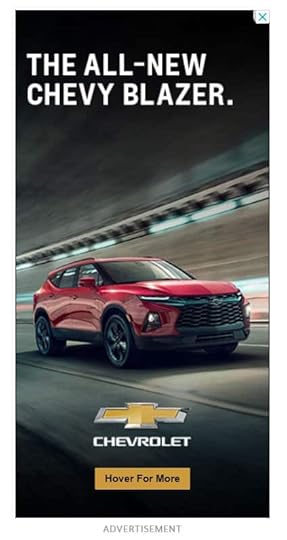
A straightforward ad copy can still connect strongly. This vehicle ad proves that – clean design with minimal text yet still intriguing. The call to action button’s hover feature deepens engagement, revealing more details interactively.
It attracts interest despite blank space and sparse wording. With some offerings, less truly is more if key selling points come across quickly. This gets the balance right between impactful and concise.
#8 Display Ad Example: Express Clothing
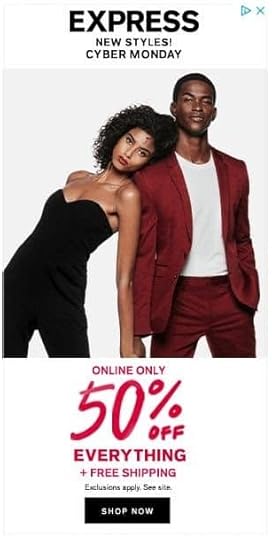
The hero image shows some available clothing styles, with the ad promising new fashions. The Cyber Monday heading captures eyeballs by touting steep savings for the holidays.
It’s hard to scroll past such an enticing deal. The value proposition compels clicking for a closer peek.
Online shoppers will want to check out the offering, even if only out of curiosity. Overall, this effective display ad checks the right boxes:
Illustrated product design.A timely promotion for significant sales.Savings are framed as too good to pass up without investigating.#9 Display Ad Example: Sherwin Williams
Sherwin Williams taps into customization cravings with a personalized call-to-action. Their CTA button leads to a quiz handing users their unique ‘Color ID.’
This is far more intriguing than a generic ‘Shop Now.’ The interactive angle draws on the digital-age desire for things specially tailored to an individual. This novelty should outperform the regular e-commerce CTA text in clicks and conversions.
#10 Display Ad Example: Disney +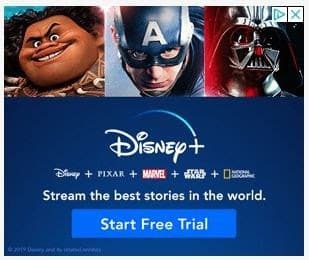
Disney+ entered an intense streaming competition but held prime content advantages with world-class stories to share.
They showcase a solid value proposition upfront. Then, the call to action tempts viewers to try their new streaming platform for free.
Owning timeless and beloved tales helps Disney+ to draw massive clicks. The ad is a great example of how to leverage brand trust.
#11 Display Ad Example: WayFair

Wayfair’s display ad gets quickly to the point. It pushes shoppers directly to Wayfair.com via its discount offer and noticeable “Shop Now” button.
This hard-to-miss Call to Action keeps Wayfair top of mind and prioritized for browsers eager to save big on household items.
#12 Display Ad Example: SunTrust

SunTrust’s limited-time student loan offer suits the constraints of display advertising.
Rather than cram details into small spaces, an attractive smile from a young woman and a clear call-to-action drive site traffic for more information.
The nature of special deals with looming deadlines demands concise hooks. This creative directs focus onto easy next steps with minimal distractions.
#13 Display Ad Example: Shopify

As an e-commerce leader, Shopify simplifies website creation, which fuels its dominance. Yet it provides far more – a full suite of sales tools vital for online entrepreneurs.
This ad spotlights those capabilities upfront while encouraging clicks with a free trial offer. For retail businesses desiring expansion online, the value proposition speaks volumes – effortless sites and selling infrastructure to convert.
#14 Display Ad Example: Cadillac
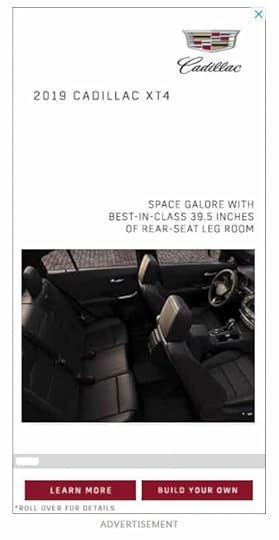
True to Cadillac’s signature luxury, the ad shows convenience for high-end lifestyles.
It captures the brand’s aesthetic, and the two different calls to action boost further engagement.
#15 Display Ad Example: Chase

Chase’s ad highlights a $200 bonus plus no yearly fees. This appeals to most credit card users.
The Freedom Unlimited card name implies open-ended possibilities. Viewers quickly grasp key perks before clicking to learn more. Simple but compelling, it spotlights incentives without overloading.
The CTA button pops in green, signaling viewers can freely explore. It packs lots of motivation to click by targeting diverse needs yet maintains straight-to-the-point clarity on card advantages.
#16 Display Ad Example: Zillow

Zillow spotlights home listings for serious buyers. The ad previews two different listed apartments. This is a good use of limited ad space to sell the opportunity.
The visually-driven approach speaks to committed home shoppers ready to explore specifics through clicking.
#17 Display Ad Example: Audible

Many people now love audiobooks. Audible lets book fans listen to the content of their favorite books. The audiobook and podcast service gives three audiobooks each month. In this ad, new users are immediately offered a discount.
The goal is to get more listeners hooked on everything Audible provides. When you can dive into so many spoken stories, it’s easy to get caught up in playing more. Audible banks on that appeal.
The ad’s visual draws instant interest by featuring a bestselling book readers already crave to enjoy.
#18 Display Ad Example: GMC
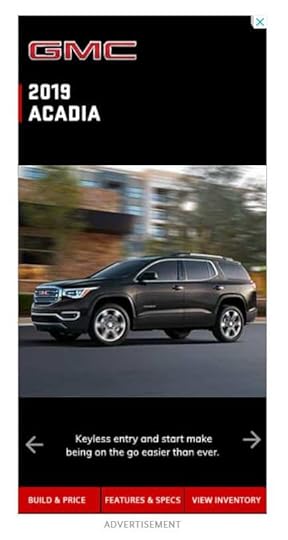
This auto ad works well for two big reasons. One – it shows off a nice vehicle feature many people would want. Two – it includes more than one call to action button to pick from.
Highlighting a top desired product feature and then giving website visitors options on the next steps is smart. Having choices on what to click on makes customers feel in charge.
This winning combo turns initial curiosity into deeper commitment. The ad speaks right to preferences and gives control. More people will connect with its message this way, meaning better ad results.
#19 Display Ad Example: MailChimp

MailChimp started by focusing solely on email campaigns. But now, their tools help marketers do much more. This ad design tells us two key things.
One – It tells you about MailChimp’s new product. Two – the company aims to boost customer businesses.
The branding elements, like colors and logos, match what we expect from MailChimp. The main CTA button pops from the other text cleanly. There are no confusing extra designs to distract from signing up.
#20 Display Ad Example: Birch Lane

Birch Lane’s ad uses a good quality photo and big savings discounts to draw clicks. The call to action stands out as well. With Google display ads, you must make strong impressions quickly.
Viewers barely glance before moving on. So quality pictures, big deals in dollars off, and hard-to-miss buttons to click work well for this ad. Together, this triad makes this ad click.
#21 Display Ad Example: Etrade

Etrade’s ad speaks directly to a top issue for online investing apps. Many people feel alone trying to pick financial assets and trade through their phones. Doing enough research seems really hard and lonely.
So right away, Etrade says – let’s join together on this instead. We’ll invest along with you. Their focus on not leaving you to figure investing out by yourself makes their service stand out.
Addressing that major pain point head-on gives a big value promise upfront. It provides a sense of togetherness that is lacking in other finance apps.
This ad also uses green thoughtfully. Green can signal money and wealth. Here, the green is softened with some blue for stability. That creates a mood of being refreshing yet secure.
#22 Display Ad Example: Wells Fargo
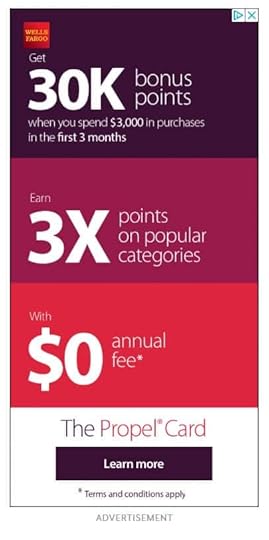
This credit card ad by Wells Fargo uses attractive numbers and bold benefits to hook in potential customers. Specifics like 30,000 bonus points grab notice fast.
Calling out perks like no annual fees also wins attention. People tend to buzz over digits that signify big wins or savings.
#23 Display Ad Example: Brita

Lots of plastic water bottles get trashed annually. Brita seeks to change that. Their filtered bottle looks slick and simple in the banner ad.
It gives an assurance of the same Brita water quality without waste. Reusable containers now seem standard, not special. But Brita’s CTA seems to be promising to quench each person’s thirst with a purified refreshment.
Here are a few key notes on Brita’s ad:
First, their value promise connects to cutting waste. Many people support that cause.
Second, they picked a bottle color that matched clean, tasty filtered water. This clear blue-green evokes crisp purity you’d gulp down. Choosing an exact color echoing their top product benefit is brilliant.
#24 Display Ad Example: ActiveCampaign
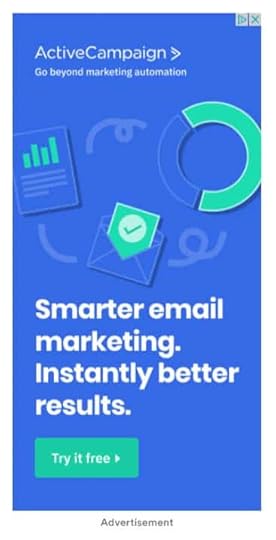
ActiveCampaign’s ad targets results-focused marketers. So, highlighting better marketing automation catches their eye quickly.
Offering a free trial seals the deal even more to draw clicks. The ad plays to the core priorities of achieving more with smarter effort.
#25 Display Ad Example: Amazon

Low wages are among the top pain points some employees in the retail e-commerce industry face. While Amazon pays higher than the national average, this hiring ad speaks directly to money worry.
The Call to Action also does a great job. It gently invites interested individuals to join the Amazon team. This hints at a friendly, supportive workplace.
#26 Display Ad Example: Constant Contact

Constant Contact uses a casual, conversational voice in this ad. The relaxed tone keeps things simple and makes the ad stand out.
Offering a free test run of its email marketing software also hooks readers. The no-commitment trial sign-up incentivizes clicking through.
#27 Display Ad Example: Staples

This display ad from Staples aims to highlight low prices and drive more shoppers through their doors. Using a call to action that says, ‘Find a store,’ works great in boosting store visits.
Keeping text minimal lets the low pricing detail stand out to draw in value-hungry eyes.
#28 Display Ad Example: Nivea
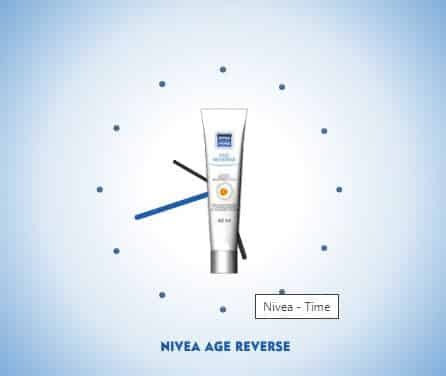
Nivea’s ad keeps things simple yet uses imagery well. Their age reverse cream boldly promises to reverse aging.
Smartly showing the actual product image on top of a clock illustration drives the promise home further.
This creative display ad grabs eyes by spotlighting the Nivea brand, the product, and its anti-aging benefits. That’s a winning promotional combination executed smoothly.
#29 Display Ad Example: Vista Print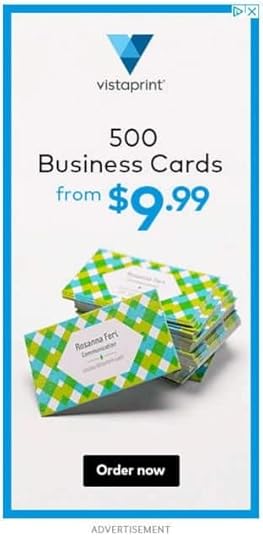
This ad shows how brands can succeed by providing consistent, excellent service and value.
Vista Print offered 500 business cards at a low cost. Earning repeat business for expanded printing needs is the business goal. They built their business through this model.
This ad uses a clean, simple look, sticking to the basics. It highlights low card rates and makes it easy to place orders with a bold CTA button.
Vista Print continues playing to its proven strength while upholding quality. It’s smart to leverage what works.
#30 Display Ad Example: Nintendo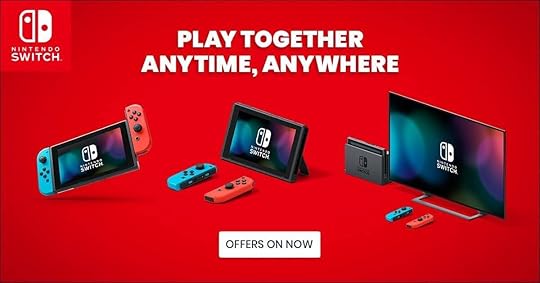
Nintendo used a sharp visual display ad with concise text to convey its message.
The central part of the ad focuses on the product. That gives the simple but powerful tagline breathing room to speak to video game enthusiasts precisely. The ad size and the vibrant red color are key in drawing attention.
#31 Display Ad Example: Air France

Bright colors plus bargain rates grab eyes in this display ad by Air France. The ‘Book Now’ call to action button works great to close the sale.
Both factors work together to convert page impressions into customer commitments.
#32 Display Ad Example: PODS

This ad by PODS speaks directly to moving and storage headaches for families. The moving and storage company puts its solution forward fast – move and store household items on your own terms.
That would strongly appeal to many who dread the stress involved in those activities. Clicking the ‘Get Moving’ CTA button to engage the services of PODS would follow next.
#33 Display Ad Example: ChordBuddy
ChordBuddy displays the logos of popular media companies and channels that have featured them.
The brand logos build trust and give site visitors that extra motivation to click through. The goal is to lead viewers to buy their guitar learning system and kits.
Tapping into their association with recognizable media brands like Forbes, ABC, and MSNBC works magic. It makes ChordBuddy seem credible and monitored by brands we know. A great use of social proof in a display ad!
ConclusionThat wraps up our tour of some finger-lickin’ good display ads in the online advertising landscape. As you saw, with some creativity and strategic thinking, your display ads can do two things – stop fingers from scrolling and get the clicks flying in.
The display ad examples we covered show the power of having an intriguing image, compelling ad copy, or bold text to draw eyes in.
Whether you make viewers laugh, gasp, or tilt their heads, unique and welcoming ads invite engagement. And without being pushy or misleading. Simply put – make ads people want to click.
Study these examples for inspiration as you craft your next display ad campaign. See what interesting layouts, emotional appeals, or unique value propositions connect with users.
Test different images, colors, and ad sizes too. And don’t forget to follow best practices for 2023 or whatever year you read this article. Things change fast with Google Ads and other online advertising channels.
If you need help reaching your target audience with display ads, AdvertiseMint can help!
With our paid social media ads services, we can put your products or services right on the faces of people who need them. Yes, our ads experts are that good!
Want to leverage our advertising services to scale your business?
Then partner with us right away! You can get started by having a consultation with one of our ads experts.
Click here to request your FREE Facebook ad consultation now!
December 1, 2023
Remarketing Lists for Search Ads: The Tactical Guide to RLSA
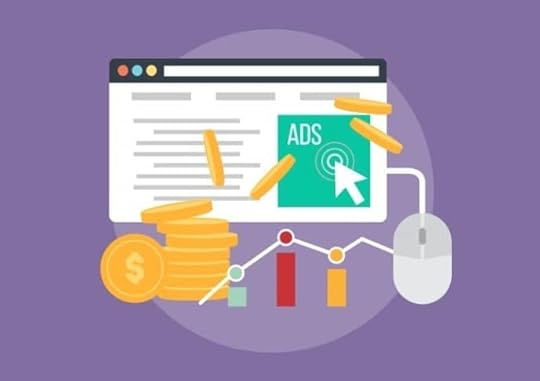

Are your Google Ads feeling lackluster lately? Want to re-engage valuable audiences and boost conversions? Well, I’ve got a great solution for you!
Introducing…Remarketing Lists for Search Ads, also known as RLSA.
According to research, 71% of digital marketers allocate between 10% and 50% of their online advertising budget to remarketing. That shows how vital remarketing has become for today’s marketers seeking the best ROI on their spending.
In this tactical guide to RLSA, we’ll explore how to:
 Create and use remarketing lists to track previous site visitors
Create and use remarketing lists to track previous site visitors
 Set up RLSA campaigns to serve targeted ads
Set up RLSA campaigns to serve targeted ads
 Target specific keywords and ad groups with RLSA
Target specific keywords and ad groups with RLSA
 Use cross-channel remarketing strategies to supercharge your ROI
Use cross-channel remarketing strategies to supercharge your ROI
And more!
Whether you’re an RLSA beginner or a seasoned pro, this guide breaks things down into understandable chunks. You’ll learn actionable tips to engage past visitors while they search on Google. And even convert them to paying customers.
Sounds enticing?
The remarketing tricks ahead will soon have you maximizing campaigns like a true master.
Let’s dive in!
Understanding Remarketing ListsBefore we get deeper into Remarketing Lists for Search Ads, it’s important to clearly understand the idea of remarketing lists.
What exactly are remarketing lists for Google search ads?
Remarketing Lists 101In simple terms, remarketing lists are custom audiences of people who’ve previously interacted with your business in some way. We’re talking about people like:
Site visitorsApp usersYouTube viewersPurchasersWith remarketing, you can continue engaging these audiences with relevant messaging after your initial contact. It’s highly targeted marketing powered by recent first-party data on known audiences.
For example, if Bob visited your e-commerce site yesterday and added items to the cart but didn’t make payment, you can serve Bob ads encouraging him to complete his purchase.
According to recent data from the Baymard Institute, the abandonment rate for online shopping carts is 70.19%.
Remarketing helps you stay top of mind. It nudges site visitors to complete purchases or move them down the sales funnel with timely, tailored messaging.
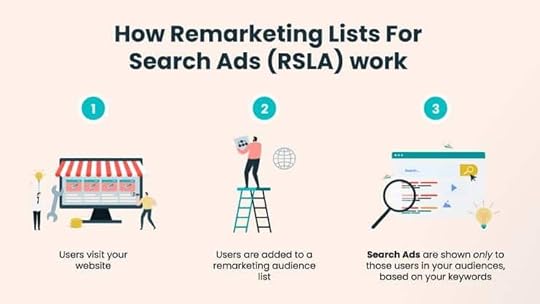
Source: growthmindedmarketing.com
Different List OptionsThere are a few flavors of remarketing lists, including:
Standard remarketing: All visitors to a page or set of pagesCustomer lists: Specific buyer segmentsLookalike segments: People who share characteristics with your buyersDynamic remarketing: Ads with specific products/services a person viewedTake inventory of your business goals and audiences. Then, get strategic about possible list segmentation. You can run different campaigns for various high-intent groups rather than blasting everyone with generic ads.
Why Audience Targeting MattersIn short – relevance is revenue. When you serve tailored messaging to laser-targeted segments, you grab attention and drive conversions.
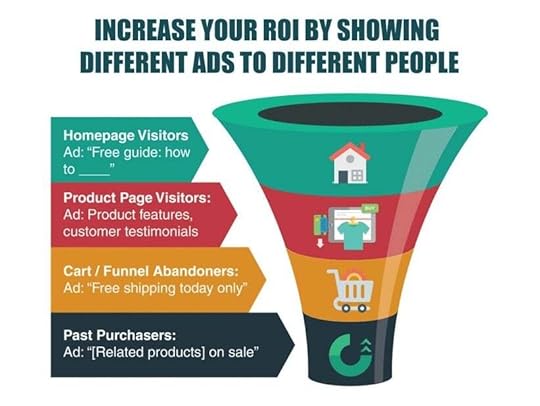
Source: growthbadger.com
According to a SharpSpring report, 45% of marketers say access to information on desired audiences is a highly desired feature in a remarketing solution.
Remarketing lists help you group and engage key audiences across multiple channels. If leveraged correctly, your marketing efforts start to feel more like helpful recommendations than annoying ads.
Creating Remarketing Lists for Search AdsLet’s get into the crucial steps for setting up remarketing lists that will power your winning RLSA campaigns!
To unleash the magic of RLSA, you need to:
 Add a remarketing tag to your site
Add a remarketing tag to your site
 Create a remarketing list in Google Ads
Create a remarketing list in Google Ads
 Connect list to search campaigns
Connect list to search campaigns
Not too bad, right? Now, let’s dig into additional details.
Installing the Remarketing Tag
You need to insert a special tracking code on every page of your site. Here’s a step-by-step procedure to do that:
Login to your Google Ads account and find the remarketing tag toolCopy the full tag code providedPaste the code on every page of your site between the tagsDouble-check that tracking is enabled and workingDeclare the use of cookies for transparencySuccessfully installing the remarketing tag allows Google to drop a cookie and identify visitors to build your lists.
Creating the List
In Google Ads, click on “Tools & Settings”Navigate to the “Shared Library” sectionClick on “Audience Manager” and select “Audience lists” menu Click on the blue “+” buttonName your list something specific like “Site Visitors Last 30 Days”Save and submit for review.Once approved, you need to turn on this list.

Connecting List to Campaigns
Go to the desired search or display campaignIn campaign settings, click “+Add” under AudiencesSelect your newly created remarketing listAdjust bids and budgets as neededSave, and that’s it – you did it!The remarketing tag on your site will start populating your list with visitors to target. Monitor your analytics and tweak your RLSA strategy over time for better conversions!
Implementing Remarketing Code
Here are a few key considerations:
You should add the remarketing tag to every page of your website through Google Tag Manager or by hardcoding it into your site.
Be transparent by declaring the use of cookies in a privacy policy or banner message.
Enable cookie expiration period based on expected customer cycle times.
Use UTM parameters to track conversions from remarketing clicks.
Strategies for Effective List Creation
Build 5 -7 core remarketing lists based on:Recent purchasersPage viewsTime on siteAbandon cartsTopic/Category interestKeep list durations short – 30 – 90 days max
Leverage analytics to identify your best-performing visitor segments
Create separate Campaign Management and Audience Management accounts for easier organization
Use ”Lookalike segments” to expand reach
Refresh stale lists with Customer Match uploads
Integrating RLSA into Your Google Ads Campaigns
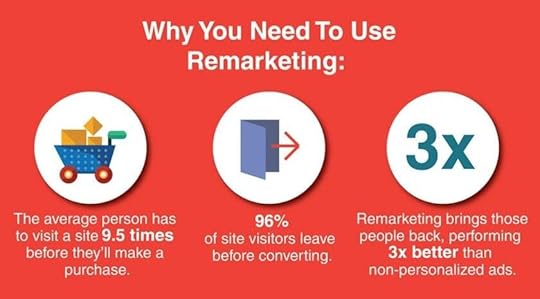
Hooray, your tailored remarketing lists are built! Now, let’s explore deploying that valuable data into active RLSA campaigns.
You essentially have two options here:
1. Enhance Existing Campaigns
This is the simplest path to take. You can avoid creating an entirely new campaign.Find your existing search campaigns in Google Ads and edit them.Under “Audiences,” click ”add,” and select the remarketing list you created.Choose whether to make it a positive audience (target with bids) or a negative audience (exclude).Increase bids for the positive audience you added to get your ads shown more frequently to site visitors.2. Launch a New Remarketing Lists for Search Ads Campaign
It’s more work upfront since you build a separate campaign specifically for your remarketing lists.You control the entire structure yourself – ad groups, keywords, bids, etc.It allows for dedicated optimization and testing focused solely on RLSA without impacting existing campaigns.You can completely customize the campaign settings, advanced location options, budgets, and more around your goals for remarketing.Many experts recommend separate campaigns for better testing and controls. But starting small within existing ones is fine too.
Key Considerations
Ensure sufficient and granular negative keywordsUse SKAGs setting one keyword per ad groupMonitor search query reports frequentlyCreate dedicated conversion goals for your siteOptimizing for Conversions
A/B test different copy anglesLeverage RLSA ad customizersTime day parting for the best coverageReview impression share metricsSite audit for sales funnel optimizationKeep iterating to find that RLSA sweet spot! It takes continual testing and tweaking to capitalize on these ultra-targeted remarketing audiences. But the long-term profits make it well worth the effort.
Targeting Specific Keywords and Ad Groups With RLSAWhen deploying remarketing lists, you must pick smart keywords and tightly themed ad groups that make sense for re-engaging site visitors.
For example, if Sally visited your online shoe store yesterday. And today, she did a Google search for “running shoes.”
You should serve Sally ads for the latest sneaker discounts rather than the totally irrelevant winter boot specials she already ignored.
Carefully Select Keywords
Include non-branded product terms
Leverage low competition long-tails
Map keywords to targeted landing pages
Categorize keywords by user intent and context
Structure Effective Ad Groups
Smaller ad groups are better – aim for 2 to 3 tight-knit keywords per ad group.Ensure each ad group’s keywords align with the same user intent and search goals. For example, group informational queries together separately from transactional queries.Use negative keywords liberally to weed out irrelevant traffic.Craft ad groups to address different parts of the conversion funnel.Optimize for Conversions
Highlight dollar savings or percentage discounts clearly in ad copy to convey value. For example, include text like “50% off running shoes – Limited time only!”Spotlight complementary or related products the visitor showed interest in previously. For example, you can showcase athletic clothing if they viewed running shoes.Offer free shipping guarantees or fast delivery timelines – when possible – to reduce friction.Share unique discount promo codes tailored to the specific visitor. For example, Sally gets code “SALLY25OFF” for 25% off her cart.Closely monitor clicks, add-to-cart rates, and purchases.Use analytics to optimize pages for higher conversion rates.Test different CTAs, layouts, images, and copy.Customizing RLSA by granular keywords and ad groups transforms random leftover audiences into powerful revenue-driving machines ready to convert! 


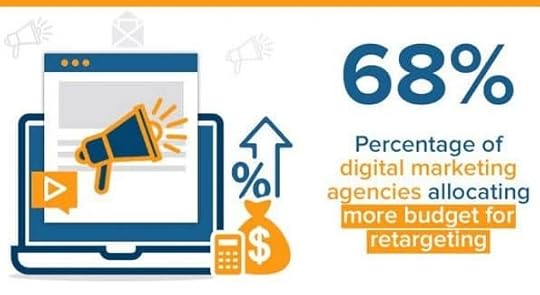
Source: financesonline.com
Adjusting Bids & Ad Messaging for Remarketing CampaignsLet’s discuss some advanced tactics to optimize bids and ad messaging for your tailored Remarketing Lists for Search Ads campaigns.
Navigating the Bidding Trade-offs
Finding the right bid strategy is crucial but tricky with remarketing. You can bid high to gain exposure among valuable previous visitors like those who recently purchased. But avoid overpaying per click long-term and eroding ROI.
Here are some smart approaches to balancing bids for effective remarketing:
Leverage Google’s bid simulator to model outcomes at different CPC levels.Mirror the bid strategies of existing high-performing search campaigns.Increase bids for very engaged visitors like those who added items to their carts or spent significant time on-site.Use lower bids to re-engage people who visited your site from over 90 days ago.Build automated bid rules based on recency, pages visited, time on site, etc, to optimize for conversions.Crafting Compelling Ad Messaging
You need to grab attention fast among remarketing lists saturated with ads. Tactics include:
Spotlight security badges, customer reviews, or other trust signals to alleviate doubts.Remind visitors of specific pages browsed or items viewed last time to spark recollection.Feature special discounts or sales just for your list members to portray exclusivity.Add unique promo codes tied to specific users for extra incentives.Leverage dynamic ad customizers to pull in user specifics.Keep relentlessly testing ad variations, and bid amounts through a process of continuous optimization. Master RLSA campaigns and overlooked visitors transform into game-changing revenue! 
We’ve covered a ton of tactical RLSA guidance. Now, let’s connect the dots on optimizing these campaigns to enhance conversion rates for your products or services massively!
At their full potential, tailored RLSA campaigns can:
Re-engage audiences showing existing intent and interestRemind visitors of previous positive interactions with your brandContinually nurture site visitors across devices and channelsThis provides unmatched ability to:
Influence purchases at key momentsReduce cart abandonment rates dramaticallySpotlight relevant discounts and personalized promosStrengthen the lifetime value of existing customersThe beauty lies in leveraging search patterns signalling buying readiness. Then, you can deploy highly targeted messaging matched to each visitor’s demonstrated affinity.
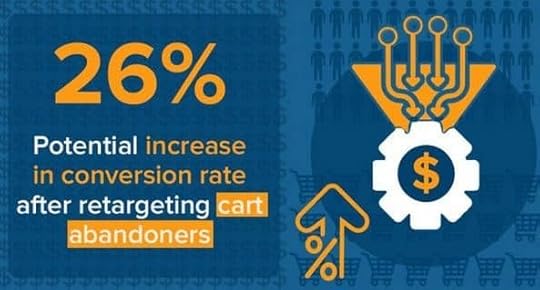
RLSA does require diligent monitoring and a scientific, data-led approach. Continually track campaign analytics around:
Click through ratesPage viewed per sessionTime on siteCart addition and checkout ratesSales volume from a remarketing effortRefine your ads, landing pages, negative keywords, and bids until you unlock maximum performance. Master RLSA and transform your online advertising ROI!
Cross-Channel Remarketing StrategiesWe’ve focused heavily on remarketing within Google Ads. But RLSA becomes even MORE powerful when integrated across multiple marketing channels.
Let’s discuss taking your efforts to the next level through:
Cross-platform expansion.
Cohesively combining RLSA with other remarketing tactics.
Maximizing impact and cohesion across every channel.
For example, once Sally visits your website, you can:
Show her tailored product ads across Facebook, Instagram, and more that are aligned with her interests.
Send Sally personalized email promotions based on items she added to her cart.
Display customized display banners to Sally about complementary items across publisher websites.
Serve Sally special video ads on Youtube displaying products she showed interest in.
Additionally, you should:
Use unique UTM tracking codes to connect conversion performance data across platforms.
Build custom audiences across channels based on the highest-converting landing pages and products.
Continually append customer data to your main remarketing list for ongoing optimization.
The key is creating synchronized sequences tailored to individual users. Guide visitors down personalized post-website journeys until they convert. Align messaging while varying creative to avoid fatigue.
Get strategic with cross-channel remarketing. When you do so, sales become inevitable as visitors engage across myriad touchpoints.
ConclusionRemarketing Lists for Search Ads (RLSA) present a tremendous opportunity to boost your ad performance significantly.
When executed strategically, this powerful advertising strategy allows you to:
Re-engage people who previously visited your site via customized messaging.
Drive conversions by aligning previous research to future purchases.
Continually optimize based on user actions for maximized ROI.
While it takes work upfront, the long-term profit potential of remarketing is immense. Humans are creatures of habit – and RLSA lets you transform previous interests into future sales at scale.
With marketing and advertising, you can always do with more helping hands.
Need help running or optimizing social media ads to drive more sales?
At AdvertiseMint, we can help boost your sales goals and scale your business using our paid social media ads services.
We’ve successfully done so for countless businesses and want to do the same for you. We have the experience and results!
Partner with us and leverage our targeted ads services to reach the right audience for your products or services. You can get started today. It begins with having a consultation with one of our ads experts.
Click here to request your FREE Facebook ads consultation now!
November 22, 2023
How to Scale Your Business Online and Do it Right


Starting an online business is exciting. But growing it can be hard work. You’ve probably been wondering how to scale your business online with so much competition around.
Worry no more! This guide will show you how to successfully scale your business online and do it correctly.
We’ll discuss:
Identifying your ideal customers to laser-focus your marketing messageEngaging and retaining your customers to boost repeat salesRefining your pricing strategy to accelerate profitable growthAutomating for efficiency as you grow biggerAnd more!With planning and focus, you can achieve your business goals and scale your company online. Building a profitable and successful business is every entrepreneur’s dream.
After reading through this guide, you’ll be equipped with proven online business growth strategies to fulfill that dream.
Let’s get started!
7 Powerful Ways to Scale Your Online BusinessReady for business growth? These ideas will help you thrive and soar to new heights. Here are seven powerful ways to scale your business online.
#1: Identify Your Target AudienceKnowing exactly who you want to sell to is crucial for strategically scaling your business. The first step is conducting thorough market research to identify your target audience.
Analyze your existing customer base and see if any patterns emerge. Do they share common demographics, interests, or values? This insight allows you to create detailed buyer personas – representations of your ideal customers.
Creating comprehensive buyer personas is key for tailoring your scaling strategies effectively in 2023 and beyond.
To create comprehensive buyer personas, you need to include details like:
Demographics – location, age, gender, income level, education status, etc.Values and priorities – are they family-oriented? Eco-friendly? Focused on career success?Interests and pain points – what motivates them or keeps them up at night?Buying habits – where and how do they shop online? How do they find new brands?Objections – what barriers might prevent them from buying from you?Using data analytics can also help you learn more about your audience and potential customers. Study website traffic sources, engagement metrics, sales data, and online reviews. This quantifiable information reveals valuable insights about customer behaviors and needs.
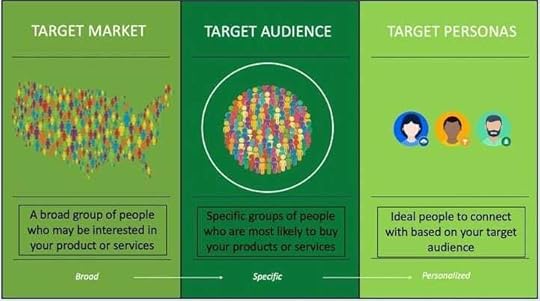
Source: searchenginejournal.com
Keep diving deeper into your audience research over time. Markets and audiences evolve, so you need to refine your understanding continually. Refresh your buyer personas regularly to reflect changes.
With detailed buyer personas to guide you, you can create marketing messages, product offerings, and brand positioning that connect with your targets.
Strategic insight is key for reaching the right customers and successfully scaling your business.
#2: Optimize Your Product or ServiceYour product or service is the heartbeat of your business. To scale up, you’ve got to nail your core offering and wow customers.
How do you level up?
First, become obsessed with customer reviews and feedback. They offer a treasure trove of insight into your customers’ wishes, wonders, and pains. Study their feedback and see it as an opportunity to adapt and improve. Address those recurring complaints and must-have feature requests.
Next, continually refine your pricing. Could a free trial reel in hesitant shoppers? Would a VIP plan entice your biggest fans to spend more? Test different models to find the sweet spot.
Optimization is always ongoing and never ends. Continually experiment and enhance to stay razor-sharp. Deploy surveys, user tests, and all the data you can access. Leverage that intel to heighten quality and value.
Innovation shouldn’t stop at your product. Ensure your entire customer experience, from website to support, feels cohesive and on-brand.
Remember, today’s satisfied customers are tomorrow’s loyal brand advocates. By obsessing over your offering and customer experience, you’ll lay the groundwork to grow your business purposefully.
#3: Focus on Customer Engagement and RetentionGaining new customers is vital for every business, but you need engagement strategies to keep them returning. This retention is crucial for sustainable growth. Let’s explore some fun ways to boost customer engagement and loyalty!
First, consider creating a rewards program with perks like discounts, freebies, and early access to new products. These special offers entice potential customers to join while incentivizing existing ones to spend more.
Loyalty tiers are another great option – they provide progressively better rewards as customers move up levels. Recognizing your VIPs makes them feel valued. Just be sure program perks align with your brand and audience.
Surprise giveaways, contests, and personalized promotions also nurture engagement. Send subscribers and top buyers special offers like exclusive sales or free bonuses. Show your community some love!
Provide stellar customer support across every channel too. Quickly resolve issues and exceed expectations. This exceptional service helps turn one-time shoppers into lifelong brand advocates.
An onboarding sequence guides new users or customers smoothly through their first experience. Reach out to welcome them personally and offer assistance. The better the onboarding, the higher retention and referrals will be.
Social media plays a big role as well. Share valuable content, run contests, and directly engage your followers. These social connections make people more invested in your brand.
You can increase customer value over time with the right rewards, great service, and social connections. Relationship building is foundational for sustainable growth.
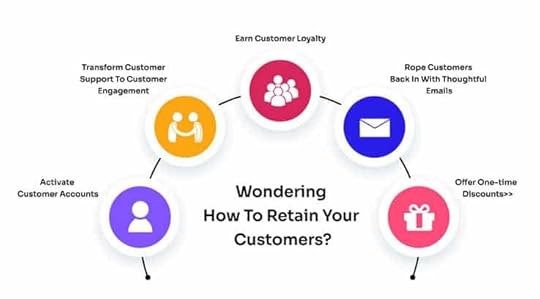
Source: lifesight.io
#4: Refine Your Pricing StrategyPricing plays a huge role in positioning your business and attracting ideal buyers. As you scale, revisit your pricing model to help you profitably expand your customer base.
First, research competitors and analyze the market landscape. Keep tabs on the pricing strategies succeeding in your niche. This informs how you set your rates.
Next, segment your audience and develop targeted price points. For example, offer student discounts or budget-friendly introductory plans to win over more cost-conscious buyers.
Consider a tiered pricing structure with a free or low-cost entry-level, mid-range plan, and premium package. This casts a wider net.
Promotions like limited-time sales, seasonal offers, and first-time discounts can incentivize purchases from new segments too. Once you land new customers with special pricing, focus on upselling them to higher tiers over time.
On the flip side, don’t underprice yourself, even temporarily. This dilutes brand perception. Anchor your core pricing to the immense value you provide. Review metrics often and run A/B tests to optimize. Tweak prices based on customer response data to nail that profit/growth sweet spot.
With the right mix of market research, customer insights, and testing, you can devise pricing strategies to scale your startup business sustainably. Set rates that balance acquisition with profitability and drive growth.
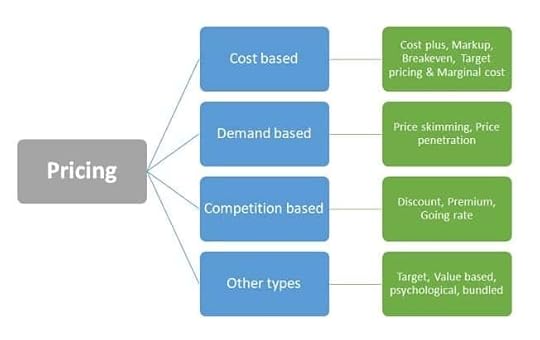
Source: mbaskool.com
#5: Make Data-Driven DecisionsScaling successfully means letting data and analytics guide your marketing strategies and decisions. According to a McKinsey survey, companies leveraging customer analytics extensively are 2.6 times more likely to outperform competitors in terms of ROI.
The numbers don’t lie, so tap into analytics to take the guesswork out of growth.
Use tools like Google Analytics to understand your website traffic. Analyze visitor demographics, acquisition channels, bounce rates, and other trends.
These insights tell you how people find your site, where they drop off, and which content performs best.
Dive into sales data to see your top converting products and most effective marketing campaigns. Track ROI in key areas like search engine optimization, PPC, email outreach, and social media. Double down on tactics that yield real revenue.
Set up dashboards to monitor key metrics like website traffic, conversions, profit margins, and customer acquisition costs in real-time. Keeping track of the numbers helps you spot dips or surges quickly.
A/B testing is another must. Try variations of product pages, emails, ads, headlines, etc., and let data guide your decisions. For example, test email subject lines to determine which gets the most opens.
Crunch the numbers from surveys and reviews too. Sentiment analysis and feedback metrics tell you how customers really feel about your brand. Address any pain points that surface.
While passion and creativity fuel business, data brings objectivity. Let a data-driven approach guide your high-impact decisions if you want your business to grow. The numbers show what’s working, so let them light the way.
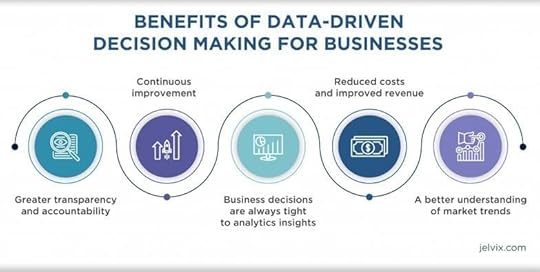
Source: jelvix.com
#6: Expand Your Marketing Channels and PartnershipsTo scale up, you must keep widening your audience reach and constantly getting new buyers. This means expanding beyond your core marketing channels and forming key partnerships.
First, double down on the platforms already working for you, like SEO, email, and social media. Optimize your online marketing strategies to convert more visitors into customers.
Then, layer in new channels with untapped potential to diversify your acquisition mix. Consider podcast ads, influencer collaborations, guest blogging, retail partnerships, and more.
Look for partnerships that allow you to tap into an established brand’s audience. For example, you can run promotions with complementary businesses.
Cross-promotions expand reach too. Partner with non-competing brands to share content and run co-marketing campaigns. This compounds exposure.
Affiliate marketing is another avenue to explore. Get people to promote your offering and pay them performance-based commissions to drive new sales.
The key is diversifying your customer acquisition strategy across many effective channels. Widen your net with both owned and paid avenues.
You can expand your audience reach with the right partnerships and promotional mix. Get these things right, and thank me later.
#7: Implement Automation for Efficiency as You Scale Your BusinessAs your business grows, you must level up your systems and processes to keep everything running smoothly. This is where automation comes in super handy! No successful founder can scale efficiently while manually handling each task.
Implementing automation helps you work smarter, not harder. Think of it like having an extra superhuman team member! First, identify repetitive workflows that consume your precious time, like order processing, email marketing, data entry, etc. These are prime tasks to automate.
Do your research to find apps that integrate with your platforms. For instance, Zapier, IFTTT, and Integromat help automate workflows by connecting your core software tools. This saves tons of time!
Customer communication is another area where automation shines. Chatbots provide instant replies, while auto-generated emails send timely messages to contacts. Just set the rules and let the robots do their thing!
For maximum productivity, also explore how to outsource to human helpers. Virtual assistants can manage admin work, while freelancers can tackle specialized projects. This gives you time and brain space to focus on critical big-picture strategies.
Implementing more automation and outsourcing allows you to optimize those crucial business systems. You can pump up productivity, deliver faster service, provide more value to customers, and have a better work-life balance.
So don’t be afraid to assign tasks to automation tools and reliable helpers. Scale the skill, not just the workload.
Streamlining your workflows is a game-changer as your business grows. Work smarter, free up your time, amaze your customers, and take your business to the next level!
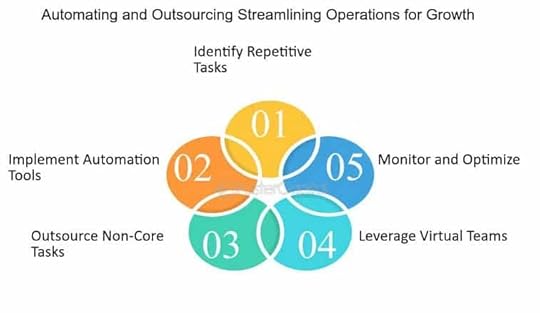
Source: fastercapital.com
Using SEO and Content Strategy to Scale Your Small BusinessWant an effective way to reach the right audience, attract more customers, and scale up your small business? Focus on honing your SEO and content strategy.
Optimizing your website and blog for search is critical for small business growth. Focus on keywords that align with your products and target audience. Create focused, search-friendly content that ranks well organically.
Create a content calendar to regularly publish helpful articles, videos, podcasts, and more. Make sure you deliver consistent value on topics your audience cares about.
Offer free templates, guides, and quizzes in exchange for email addresses. Use these as lead magnets to build your subscriber list.
Promote your content across platforms to maximize impact. Share your expertise on social media platforms like Instagram, Facebook, or X (formerly Twitter). If your business provides services for professionals, focus on LinkedIn.
Strategically use landing pages to convert visitors into leads and customers. Create pages targeted to different marketing campaigns, like email nurtures or ad clicks.
Great, search-friendly content and landing pages help you scale cost-effectively. You can attract qualified visitors with smart SEO and content marketing. And turn them into leads and happy customers.
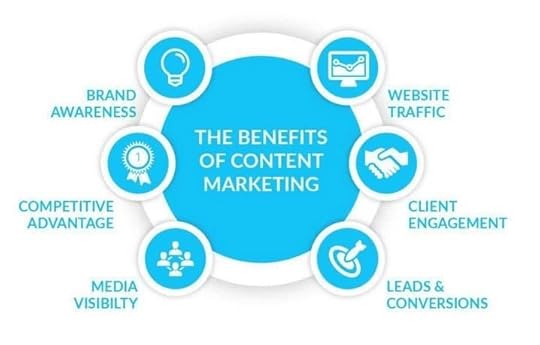
Source: peppercontent.io
Scaling Your Ecommerce BusinessIf you sell products online, there are key strategies to scale your eCommerce empire. Let’s talk about them.
First, ensure you have a solid foundation with a robust eCommerce platform like Shopify or WooCommerce. Choose a solution tailored to your business needs and growth goals.Optimize your eCommerce SEO from day one. Make your products discoverable through keyword-focused content and structured data markup. Create category pages around your products for search visibility.Streamline your inventory, order fulfillment, and shipping processes. Deploy automation where possible to save time as sales grow. Poor operations will hamper your growth in many ways.Pay close attention to metrics like conversion rate, average order value, and profit margins. Use data to optimize your sales funnel and boost revenue.Provide great customer service across email, chat, and social media channels. Support fuels retention and referrals.Consider expanding into new sales channels through tools like Amazon and eBay integrations. Diversify your revenue streams. The eCommerce landscape moves fast!
The market volume of the global eCommerce industry is projected to exceed 4.7 trillion US dollars by 2028. That’s a great reason to stay agile and keep testing new strategies: promotions, partnerships, and business model tweaks.
Your eCommerce store can grow efficiently with the right platform foundation and scalability best practices.
Financial Planning to Scale Your Online BusinessSuccessfully scaling an online business means getting your finances dialed in. Smart money management will fuel your growth!
If you are looking to scale your online business sustainably, focus on:
Projecting costs like digital marketing, website hosting, software tools, and inventory. Crunch the numbers realistically.Monitoring cash flow closely as you acquire more customers. Manage budgets to avoid shocks as expenses increase.Building in wiggle room for unexpected scaling costs. Things like technical issues can happen.Knowing your breakeven point for covering costs at a larger scale. Set viable revenue targets.Forecasting future scenarios using current data. Model how conversion rates translate to more sales and future growth.Many businesses have failed because of poor financial management. A United States bank study indicates that cash flow mismanagement accounts for 82% of small business failures. Your business shouldn’t be a part of that stat!
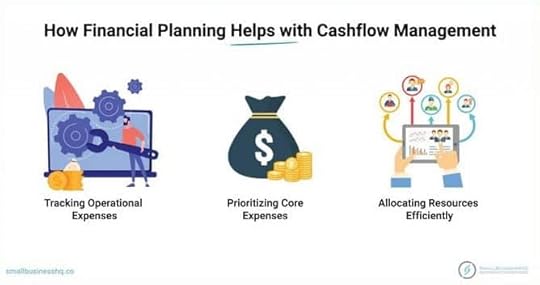
Source: smallbusinesshq.co
With robust yet flexible financial plans, you can sustain and scale your online business in a stable, profitable way. The future of your business depends on how you manage finances. Let the numbers guide the scaling process and growth!
ConclusionWe covered a ton of ground on how to scale your business online. From knowing your target audience to expanding marketing channels, you now have actionable tips to grow your business the right way.
Scaling your online business will take some work. But the payoff of increased reach and profits makes it worthwhile. Use the strategies in this guide to scale and a growth mindset to take your company to the next level.
Stay nimble as you scale by testing and finetuning based on data. Keep customers at the heart of every business decision.
I hope you feel equipped to unleash the full potential of your business. Trust the process, but remember that connecting with the right audience is key to online business success.
If you are eager to reach your target audience and scale your business, AdvertiseMint can help.
At AdvertiseMint, we help businesses reach their ideal customers and drive sales using our paid social media ads services. We have the expertise, experience, and results!
Want to attract new customers and scale new heights in your business? Then, you need to partner with us.
You can start by having a free consultation with one of our ads specialists.
Click here to request your FREE Facebook ads consultation now!
November 21, 2023
How are Companies Using AI for Marketing?


Have you ever wondered how brands serve up eerily precise ads and recommendations just for you? It’s not magic – it’s artificial intelligence (AI) in action.
More and more companies are using AI for marketing and advertising in powerful ways.
What if you could use customer data to craft personalized marketing messages? Have an AI assistant converse naturally with customers? Or generate thousands of ad variations to boost performance?
AI and machine learning make all that possible. Companies using AI for marketing enjoy significant advantages over competitors that don’t.
In this guide, we’ll explore real-world examples of successful brands using AI to take their marketing to the next level. You’ll see how companies like Nike and Coca-Cola are using AI for personalized and automated marketing.
At the end of this guide, I’m sure you’ll walk away inspired to implement AI in your business.
Now, let’s dive in to demystify how brands worldwide leverage the power of AI to transform modern marketing!
Understanding Artificial Intelligence in MarketingWhat exactly is artificial intelligence (AI) in marketing? In simple language, AI refers to tech systems that can do tasks that normally require human intelligence. For example, understanding language, recognizing images, or making predictions.
When used in marketing, AI allows brands to:
Analyze customer data to personalize content and product suggestions.Use machine learning technology to optimize ad targeting and budgets.Generate many ad variations or social posts to improve results.Automate routine marketing tasks like email and social media scheduling.Create product descriptions and marketing copy using AI writing tools.Build chatbots that understand natural language to help customers.And more.A PwC research suggests AI’s total contribution to the world economy could reach $15.7 trillion annually by 2030. This demonstrates the vast potential for businesses to leverage AI across campaigns and touchpoints.
The uses of artificial intelligence in marketing are nearly endless!
Whether it’s using customer data analysis, automating tasks, generating marketing content, or optimizing campaigns, AI empowers marketers and online brands to accomplish more.
Basically, AI can help with any marketing task involving predicting behavior, personalizing experiences, improving content, or boosting campaign results.
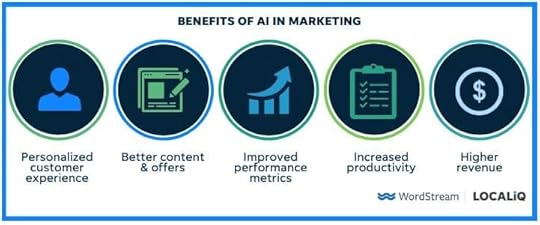 Source: wordstream.com
Source: wordstream.com
Now that we understand the basics of AI-driven marketing, let’s look at some real-world examples of AI in marketing.
From automation to digital ads, email, and social media, AI is significantly boosting companies’ digital marketing efforts.
Marketing AutomationTired of manually scheduling social media posts and email campaigns? AI to the rescue!
AI tools like Acoustic or Drift use machine learning to understand natural language and automate a company’s marketing processes.They can track audience engagement data to optimize timing for campaigns.AI can even generate subject lines and social posts designed for higher open and clickthrough rates.This allows marketers to focus on strategy while AI handles the busy work. Set it and forget it!
Digital MarketingFrom paid search to display ads, AI is revolutionary for digital marketing in the following ways:
Machine learning algorithms can rapidly test different ad variations to find the highest-performing combination of creative, headline, etc.AI analyzes clicks, conversions, demographics, and more to optimize targeting.Dynamic creative optimization uses AI to generate thousands of ad versions for different audiences automatically.Top sports apparel brand Nike uses AI algorithms to study what shoppers like. The AI looks at what customers bought before and which products they browsed. This helps Nike get to know each person’s style.
Then it takes this intel to serve up personalized product suggestions for each customer. By understanding people’s tastes, Nike can recommend stuff they’ll actually want. This makes for a way better shopping experience.
The best part? The tailored suggestions make it more likely shoppers will grab those personalized picks.
Email MarketingWe all get hundreds of emails, right? AI can cut through the noise to boost engagement for email marketers.
AI assistants can generate personalized subject lines and content for each subscriber based on past engagement.Tools like Boomtrain use machine learning to determine the optimal send times for each person.AI analyzes past email marketing campaigns to know which design, content style, etc, works best.According to Statista, more than 41% of marketers surveyed say the use of artificial intelligence has led to higher revenues from their email marketing campaigns.
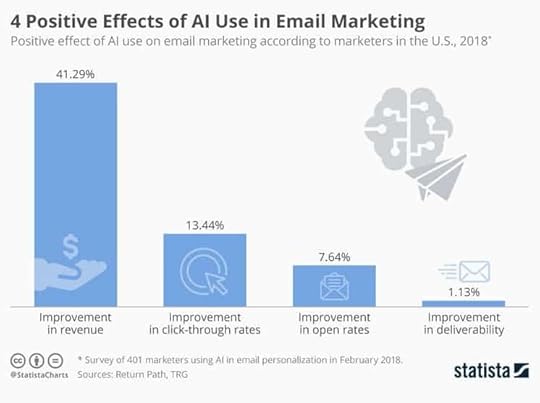
FARFETCH used AI to enhance its brand voice and saw impressive results in its email marketing campaigns. The luxury fashion retail brand recorded an increase of 38% in average click rate and a 31% boost in average open rate from the AI-powered campaigns.
Marketing on social media platforms while managing multiple social accounts is tough. But it becomes easier when brands incorporate AI into their marketing plan.
Here are some of its use cases in social media marketing:
AI social media management tools like Buffer or Hootsuite suggest content your audience may like and automatically schedule posts.Algorithms track which types of content, hashtags, etc, perform best and suggest new ones to try.AI can even create original social posts and ads in your brand’s voice. This saves tons of time while connecting with readers.As you can see, AI is making its way into all facets of marketing. And this is only the beginning! Exciting new applications are emerging daily to improve many businesses’ marketing strategies further.
AI Chatbots and Virtual AssistantsGot a customer question? Let AI chatbots and virtual assistants handle it! Many brands now use conversational AI to enhance customer service. According to Chatbots Magazine, chatbots could help businesses cut customer service costs by 30%.
Retailers like H&M and Sephora implement chatbots to field common product and order queries on their websites. The bots use natural language processing to understand questions and provide helpful information 24/7.
Messaging apps take it a step further. Sephora’s bot on Facebook Messenger can give personalized product recommendations based on past purchases and preferences. Talk about VIP treatment!
Banks like Capital One use AI-powered chatbots within their mobile apps to answer account and payment questions on the go. The bots reduce call volume by handling common requests automatically.
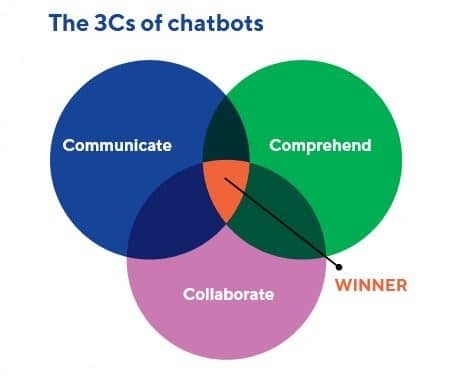
Source: cognizant.com
Virtual assistants with personality keep customers happy while optimizing operations. As AI capabilities grow, more brands are implementing conversational interfaces to enhance the customer journey.
User-friendly bots help to improve customer satisfaction while allowing humans to focus on complex issues. So don’t leave customers hanging – deploy AI chatbots for instant, personalized service with a smile!
AI for Content CreationOne of the most promising uses of AI in marketing is automating content creation:
Tools like Copy.ai and Articoolo use natural language generation to create blog posts, social media captions, and more in a brand’s voice. They only require using the right AI prompts. No more writer’s block!
Programs like Phrasee generate thousands of subject lines and slogans for optimal marketing performance.
Brands like HubSpot and Buzzfeed leverage AI writing assistants to create content drafts, saving time.
The key is combining AI content creation with human expertise for final approval. This collaborative approach makes AI an invaluable asset for any content marketing team.
The possibilities are endless when AI lends its creative skills to the marketing workflow. But it’s important to note it’s only an assistant and not a replacement for human writers.
Using AI in AdvertisingAI is transforming advertising in exciting ways. Let’s explore how artificial intelligence is powering a new era of dynamic, hyper-personalized ads.
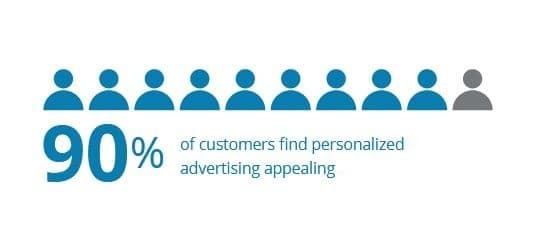
Source: deloitte.com
Defining AI AdvertisingWhat exactly is AI advertising? It refers to ads powered by artificial intelligence technologies where:
Machine learning algorithms optimize ad performance.
Tools analyze customer data to deliver targeted ads.
Personalized ad versions are generated through dynamic creative optimization.
AI advertising allows brands to test countless ad variations to identify what resonates best with each audience. It provides a one-on-one ad experience at scale!
AI Advertising ExamplesMany brands have already implemented AI to boost their ads:
Coca-Cola uses generative AI to analyze social media and other data to choose the optimal combination of visuals, captions, and more for its digital media ads.
Netflix trained machine learning algorithms on past data to improve its Google search ads. The AI now makes bid adjustments in real-time to find the best audiences.
Pandora implemented AI to customize audio ads using things like location, weather, and listener preferences.
Clearly, big and small brands will find tremendous value in using AI in advertising.
AI Image GeneratorAI can create ads from scratch! AI image generators like DALL-E 2 can produce original images simply based on text prompts.
Want an eye-catching visual for your latest digital campaign? Just describe it in natural language, and AI can generate hundreds of options.
By leveraging artificial intelligence in advertising, brands can scale creativity, optimize performance, and deliver unparalleled personalization. As AI capabilities grow, its role in shaping campaigns will only increase.
Challenges & Considerations in Implementing AI in MarketingAI opens exciting possibilities in marketing, but effectively integrating it takes planning. Jumping into AI without a strategy rarely pays off. Brands should address these common challenges:
Having sufficient customer data for AI algorithms to learn from.Choosing the right AI applications to focus on first. Start small!Integrating AI with existing marketing workflows and platforms.Ensuring transparency and ethics in AI use.Maintaining control over final creative output and messaging.Training marketing teams on getting the most from AI tools.
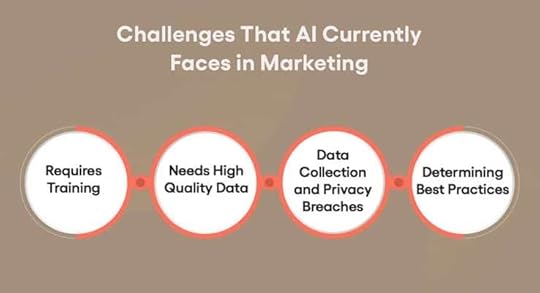 Source: unlayer.com
Source: unlayer.com
With deliberate planning, many of these hurdles can be overcome by the following:
Collect first-party data over time to fuel AI insights. Don’t rely only on third-party data.Focus initial AI projects on tasks that will demonstrate quick wins.Seek AI platforms that integrate seamlessly with current marketing systems.Audit algorithms for bias and be responsible stewards of customer data.Keep humans involved in the final approval of AI-generated content.Appoint internal AI specialists to provide training and support.AI-Powered AnalyticsMaking sense of data is every marketer’s dream. With AI analytics, brands can uncover strategic insights that would be impossible to find manually.
Specifically, artificial intelligence enables two game-changing capabilities when applied to marketing data and campaigns. Let’s briefly discuss them below.
Advanced Analytics in MarketingTraditionally, reporting only shows past performance. AI analytics enable:
Granular segmentation to identify high-value customer groupsPredictive modeling to forecast future outcomesPrescriptive recommendations to optimize activitiesTools like Datorama use machine learning to surface hidden insights across data sources. Others like Funnel.io combine AI and a drag-and-drop interface for easy data modeling.
With AI, time-consuming manual analysis becomes a thing of the past. Marketers get a strategic bird’s-eye view based on historical trends and real-time data.
For example, Spotify uses AI to analyze metrics on podcast episodes and predict listener engagement. These insights inform content planning and advertising.
Predictive AnalyticsOne of the most valuable applications of AI is predicting customer behavior:
Machine learning algorithms study past interactions to determine the likely outcomes of future campaigns.AI spots changing trends and patterns early, enabling brands to adapt quickly.Tools can even prescribe the optimal messaging and offers for different customer segments.Predictive analytics empower marketers to look into the future and take proactive actions based on data-driven forecasts.
For instance, US food delivery company DoorDash uses AI technology to forecast food delivery demand in a given area based on past orders, weather, and nearby events. This allows better driver staffing and inventory management.
Make predictive analytics work for your brand. Data holds immense opportunities when analyzed with the power of artificial intelligence.
Customer Journey Mapping and Optimization in AI-driven MarketingTraditional journey mapping relies on surveys and focus groups to generalize the experience. But each customer journey is unique.
Understanding each individual’s path to purchase is crucial. AI gives brands the power to map and optimize customer journeys like never before. Effective marketing strategies will only get better.
With AI-driven machine learning technology, brands can:
Analyze large volumes of customer data to identify common steps and pain points.Continuously update journey maps to reflect changes over time.Predict future behaviors to improve experiences proactively.Personalize journeys for customer segments based on attributes and past interactions.Receive recommendations to optimize pathways in real-time.For example, Adidas uses AI applications to analyze customer data from web, app, store, and call center touchpoints. This unified view informs personalized experiences across channels.
Personalization at ScaleDelivering 1:1 personalization profitably requires AI. Traditional methods simply don’t scale due to the following reasons:
Rules-based approaches are limited to basic segment and scenario definitions.A/B testing is time-intensive and still results in a generalized experience.Manual personalization efforts get overwhelmed beyond a small user base.AI systems overcome these hurdles by:
Analyzing exponentially more data signals to determine customer attributes and intent.Dynamically adjusting experiences in real-time based on interactions and changing context.Continuously optimizing recommendations as more data comes in.Starbucks, Netflix, Spotify, Nike, and more use AI to deliver personalized content, marketing offers, pricing, and recommendations at scale. The key is unified cross-channel data.
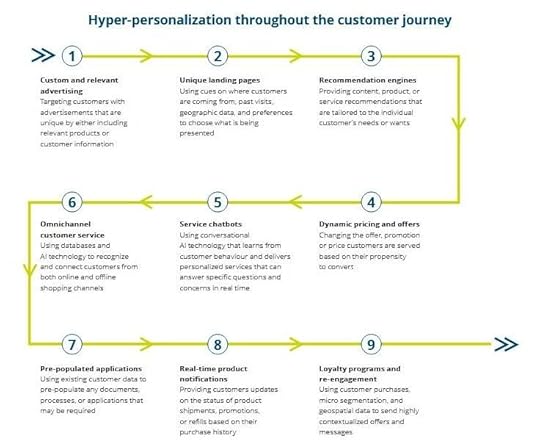
Source: deloitte.com
When built thoughtfully, AI-driven personalization creates magical customer experiences while optimizing business metrics behind the scenes. It’s a win-win situation!
Ethical Considerations in AI MarketingThe incredible potential of AI comes with great responsibility. Brands must make ethics a priority when deploying AI technologies.
Transparency and AccountabilityMany consumers are wary of AI’s “black box” nature. As a result of that, brands should:
Clearly communicate when and how AI is used in campaigns. Transparency builds trust.
Allow opt-outs for data-driven personalization powered by AI.
Audit algorithms for unintended bias and ensure diversity in training data.
Maintain human oversight and control over AI systems. Automated does not mean autonomous.
Develop rigorous testing protocols for new AI applications. Start small before deploying at scale.
Share assessments of AI marketing initiatives’ risks and rewards with stakeholders.
Assign accountability to internal AI ethics boards governing responsible AI development.
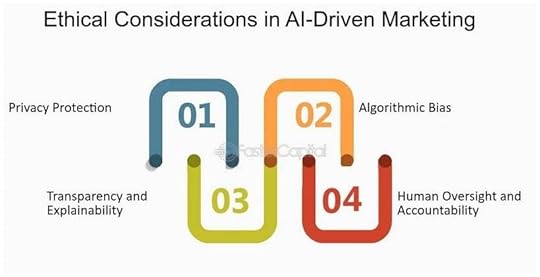
Source: fastercapital.com
With conscientious self-regulation, marketers can harness AI’s potential while addressing ethical concerns.
Data Privacy in AI MarketingBecause AI relies heavily on customer data, brands must:
Inform consumers how data is used to train algorithms and personalize experiences.
Anonymize or aggregate data to protect privacy in AI applications.
Allow customers to delete or retract their data powering AI marketing efforts.
Implement strict access controls and encryption to secure data from misuse.
Partner only with vetted AI vendors that align with your data privacy standards.
Limit data collection to the minimum necessary for delivering value to customers.
Marketing powered by AI holds immense promise. With great innovation comes great responsibility. By upholding strong ethics and transparency, brands build trust while creating happier customers and healthier businesses.
ConclusionThe era of AI in marketing is here. As we’ve seen, leading brands worldwide are already getting awesome results from using artificial intelligence.
From improving customer journeys to making campaigns perform better, AI boosts all parts of marketing. And we’ve just scratched the surface of what it can do. But brands need a strategic approach to tap into AI’s full power.
By focusing on customer needs and being transparent, companies using AI for marketing can build trust while rolling out its innovative uses.
Early adopters of AI for marketing will have a big competitive advantage in connecting with audiences. By embracing this intelligence revolution, businesses can smartly position themselves for long-term success.
Want to connect with your target audience by leveraging AI?
AdvertiseMint can help!
At AdvertiseMint, we use cutting-edge AI tools to run targeted social media ads for our clients. And we’ve delivered great results over the years.
Our ads services can help you scale your business. From tailored ad campaigns to dynamic audience targeting, we will harness the potential of AI to amplify your brand’s reach and impact.
You can get started today by having a consultation with one of our ads experts.
Click on this link to book your FREE Facebook ads consultation now!
November 15, 2023
What Is TikTok Pulse?
TikTok Pulse is a cutting-edge feature designed to bridge the gap between brands and the wave of engagement that sweeps through TikTok daily.
It’s a solution that offers advertisers the coveted opportunity to place their brand ads right alongside the platform’s most engaging and trending content—specifically within the coveted top 4% of videos. This ensures that ads are running adjacent to content that’s already capturing the TikTok community’s attention.
Moreover, TikTok Pulse is not just about adjacency; it’s a revenue-sharing program, marking a significant shift in how advertisers can benefit from the platform’s vibrant user base and dynamic content landscape.
How does TikTok Pulse Work?TikTok Pulse is an innovative feature that places brand ads right in the thick of the action—next to the top 4% of trending topics across 12 content categories, from gaming and fashion to beauty and cooking.
This enables a level of brand suitability that ensures advertisers’ messages are showcased alongside relevant content and within a context that resonates with their target audience.
The content categories are meticulously curated to align brands with the right context and to help brands unlock the full potential of TikTok’s varied and vibrant content.
When an advertiser sets up a TikTok Pulse campaign, they are empowered to target their ads within these categories, guaranteeing their ads are placed directly next to the content that TikTok’s diverse community is already engaged with.
This contextual advertising solution takes advantage of the pulse of relevant cultural moments, providing a supercharged environment for ads to flourish. With TikTok Pulse, brands can place their ads in a prime position, right where the magic happens, ensuring maximum visibility and engagement.
Guidelines to create TikTok Pulse campaignTo create a TikTok Pulse campaign, you need to have a TikTok for Business account. Once you have an account, you can follow these steps:
Go to the TikTok Ads Manager and click on “Create Campaign.”Select the “Reach & Frequency” buying type and the “Reach” objective.Select “TikTok Pulse” as the campaign type.Enter a campaign name and click on “Continue.“Set a budget and schedule.Select your targeting options.Choose your bidding strategy.Create your ad.Review your campaign and click on “Launch.“Types of ad formats for the TikTok Pulse CampaignTikTok Pulse offers a range of ad formats tailored to meet various campaign goals and to align with the engaging and immersive experience of the platform. Here are the key ad formats that can be utilized within a TikTok Pulse campaign:
1. In-Feed AdsThese are full-screen video ads that appear in the user’s “For You” page, seamlessly integrated into the content stream.
2. Spark AdsThis format allows brands to amplify existing organic posts by turning them into ads. It’s a way to leverage popular content and boost engagement.
3. TopView AdsTopView ads capture attention as they are the first thing a user sees when opening the app. They offer a long-form video experience, up to 60 seconds, with sound and auto-play features.
4. Branded Hashtag ChallengeWith this format, brands can invite users to create content around a hashtag, fostering high levels of engagement and user-generated content.
5. Branded EffectsBrands can create custom filters, stickers, and special effects that users can apply in their own videos, enhancing interaction and creativity.
These ad formats are designed to be placed alongside the top trending content, ensuring high visibility and engagement. When setting up a TikTok Pulse campaign, advertisers can choose the format that best fits their strategic goals and creative vision, tapping into the heartbeat of TikTok’s dynamic and interactive community.
Why should Brands use TikTok Pulse Ads?Premium PlacementBy positioning ads alongside the platform’s most engaging videos, TikTok Pulse places your brand in the limelight, next to the top 4% of content, viewed by a vast audience.
This premium placement is not just about visibility; it’s about being where the pulse of TikTok’s activity beats the loudest. It ensures that brand ads are part of the trending content narrative that users are already hooked on.
Enhanced Brand SafetyThe program includes a robust inventory filter that ensures TikTok Pulse ads are running adjacent to content that meets a high level of brand suitability. This safeguard is pivotal, as it allows advertisers to trust that their brand is associated with content that reflects their values and messaging accurately. Maintaining this integrity is essential for brand reputation and audience trust.
Targeted ReachWith TikTok Pulse, ads are placed directly next to the trending content that captivates users, ensuring that the ads reach the audience in their moments of peak engagement. This targeted approach means advertisers can make the most of the ‘magic moments’ when users are most open to discovering new brands. It’s about tapping into the TikTok rhythm where engagement and receptiveness are at their peak.
Contextual AlignmentThe supercharged contextual advertising solution of TikTok Pulse ensures ads are displayed next to relevant content, creating a harmonious user experience and reinforcing the ad’s message.
This relevance is key in engaging users who are already interested in related topics, thus improving the ad’s effectiveness. This strategy not only captivates but also contributes to the entertainment on TikTok.
Diverse Content CategoriesAdvertisers on TikTok have the flexibility to choose from 12 different content categories. This allows them to place their ads next to verified content that aligns with specific user interests.
By doing so, ads become more relevant to the TikTok community and engagement with the audience is broadened. Moreover, this approach enables precision targeting, making it a strategic way to reach the desired audience effectively.
Pulse PremiereWith the Pulse Premiere feature, brands can secure a prime spot for their ads at the launch of highly anticipated content, ensuring maximum visibility and engagement.
This first-mover advantage can be a game-changer in terms of audience recall and engagement, providing brands with a head start in capturing user interest.
Creative FlexibilityThe array of ad formats within TikTok Pulse, from In-Feed to Spark Ads, allows for a broad creative canvas. Advertisers can tailor their campaigns with a mix of these formats to better resonate with users and drive engagement. This creative freedom is essential in crafting unique and memorable campaigns that stand out.
The Future of Advertising with TikTok PulseTikTok Pulse is setting the stage for a future where advertising is intertwined with daily entertainment on TikTok, ensuring brands stay on the pulse of trends and user interests. With its supercharged contextual advertising solution, TikTok Pulse is poised to revolutionize how brands harness the full potential of digital campaigns. TikTok Pulse provides a glimpse into a more collaborative and immersive advertising epoch by aligning ads with the top trending TikTok content and offering a revenue-sharing program.
FAQsHow Does TikTok Pulse Work?
TikTok Pulse places ads alongside the top 4% of all videos on TikTok, ensuring they appear next to the most engaging content. Advertisers can choose from 12 content categories for brand suitability, utilizing TikTok’s contextual advertising solutions to place their ads next to trending videos within selected categories.
What are the TikTok Pulse Lineups?
Pulse lineups are curated collections of content across various entertainment categories on TikTok where advertisers can place their ads. These lineups are auto-selected and regularly updated to reflect current trends, seasonal moments, and popular cultural topics, giving advertisers dynamic options to align their ads with.
What Are the Objectives Available for TikTok Pulse?
TikTok Pulse offers objectives like brand awareness, video views, and community engagement, aiming to provide advertisers with the tools to enhance their visibility, measure their ad’s performance, and engage with the TikTok community more meaningfully.
Is TikTok Pulse Available for Everyone?
TikTok Pulse is not available to all individual users. It is a platform specifically tailored for advertisers and is accessed through TikTok for Business with a minimum of 100,000 followers.
TikTok Creative Challenge (TTCC)
TikTok Creative Challenge (TTCC) is an innovative platform that empowers creators and brands to collaborate on engaging and impactful video ad campaigns.
By leveraging the creativity and reach of TikTok’s massive user base, TTCC provides a unique opportunity for businesses to connect with their target audience in an authentic and meaningful way.
Creators, on the other hand, gain access to a platform where they can showcase their talents, reach a wider audience, and potentially earn rewards.
Purpose of TTCCTTCC operates by providing creators with briefs for specific video ad campaigns. Creators then submit their creative video ad concepts, which are reviewed and evaluated by brands. Selected creators are granted access to TikTok’s advertising tools and resources to produce their high-quality video ads. These video ads are then distributed across TikTok’s platform, reaching millions of potential customers.
Benefits of TTCC for Creators1. Enhanced VisibilityTTCC provides creators with a platform to showcase their talents and creativity to a vast audience of millions of TikTok users.
2. Increased EngagementCreators can engage with a wider audience, generating likes, comments, and shares, which can significantly boost their online presence and following.
3. Potential for CollaborationTTCC opens doors to collaborations with renowned brands, providing creators with valuable experience and opportunities for professional growth.
4. Financial RewardsCreators can earn rewards for their creative contributions, including cash prizes, product placements, and brand sponsorships.
Benefits for Brands1. Authentic Content CreationTTCC empowers brands to leverage the creativity and authenticity of TikTok creators to produce genuine and engaging video ads that resonate with their target audience.
2. Targeted ReachBrands can reach their specific target audience through TikTok’s sophisticated targeting capabilities, ensuring that their video ads are seen by the right people at the right time.
3. Enhanced Brand AwarenessTTCC increases brand awareness by associating brands with popular TikTok creators and their creative content.
4. Measurable ResultsBrands can track the performance of their TTCC campaigns, measuring metrics such as engagement, reach, and conversions to assess the effectiveness of their marketing efforts.
Features of TTCCTikTok Creative Challenge (TTCC) stands out from other creative challenges with its innovative features that streamline the process for creators and brands, fostering a collaborative and rewarding experience.
Key Features of TTCC
Seamless IntegrationTTCC seamlessly integrates with TikTok’s platform, allowing creators to access briefs, submit their video ad concepts, and manage their campaigns directly within the TikTok app.
Simplified ProcessThe TTCC process is designed to be simple and easy to follow, making it accessible to creators of all levels of experience.
Creative FreedomCreators are granted creative freedom to develop their own unique video ad concepts, allowing them to express their individuality and showcase their talents.
Brand GuidanceBrands provide creators with guidance and feedback throughout the creative process, ensuring alignment with brand objectives and messaging.
Performance TrackingCreators can track the performance of their video ads, gaining valuable insights into audience engagement and campaign effectiveness.
Rewards and RecognitionCreators are recognized and rewarded for their outstanding contributions, further incentivizing creativity and excellence.
Eligibility Criteria for TTCCTo participate in the TikTok Creative Challenge (TTCC), creators must meet the following eligibility criteria:
Age: Creators must be at least 18 years old.TikTok Account: Creators must have an active TikTok account with 50,000 followers.Content Creation Skills: Creators must have the ability to create high-quality, engaging video content that aligns with TikTok’s Community Guidelines.Creative Brief Compliance: Creators must be able to follow the guidelines and specifications outlined in the creative briefs provided by brands.Content Availability: Creators must be able to produce and submit their video ad concepts within the specified deadlines.Willingness to Collaborate: Creators must be open to collaborating with brands and incorporating their feedback into their creative work.What is TTCC+?TTCC+ is the premium solution for TikTok’s top advertisers. TTCC+ allow advertisers to receive a lot more customization during the challenge workflow. The only advertiser commitment is the ad spend against creative (min. $50K/month).
Benefits to AdvertisersTikTok Creator Challenge Premium (TTCC+) is a 1:1 advertiser service that supports TTCC’s top advertisers during their campaigns. With TTCC+, you receive all the same perks of the normal self-serve product plus additional benefits listed below:
1:1 Advertiser support, best practices and assistance optimizing creative performance on TTCC.Gain access to TTCC’s top creators who have a proven track record of exceptional performance and responsiveness.Schedule your creative delivery and creator preferences. Creator review/approval and exclusivity checks.Advertisers have the choice to reject or approve creative.Key Features of TTCC+ Service?Content Delivery in 10 days or lessTTCC Creative is exclusively for TikTok Auction Ads. Any revisions to the creative must be approved by TTCC. It is important to use the creative only on TikTok Auction Ads. Advertisers are required to use the creative in TTAM or provide revisions within 30 days.No matter what your campaign objectives are, TTCC can deliver high-quality creative at scale within days. Contact your TikTok team for more details.Final ThoughtsTikTok Creative Challenge (TTCC) and its premium service TTCC Plus offer a unique and valuable platform for creators and brands to connect, collaborate, and achieve mutual success. By leveraging the power of creativity, technology, and audience reach, TTCC empowers creators to showcase their talents, brands to engage with their target audience, and both parties to reap the rewards of collaboration.
Whether you’re a budding creator seeking opportunities to expand your reach and build your brand, or a brand seeking to connect with Gen Z and millennial audiences through authentic and engaging content, TTCC and TTCC Plus provide a gateway to unlocking your full potential.
FAQsHow can I apply for TTCC or TTCC Plus?
Creators can apply for TTCC or TTCC Plus directly through the TikTok Creator Portal. The application process typically involves reviewing a creative portfolio, providing a short essay explaining the desire to join, and potentially having a brief interview with a TikTok representative.
What are the benefits of TTCC for brands?
Brands can also benefit significantly from TTCC, such as:
Authentic content creationTargeted reachEnhanced brand awarenessMeasurable results



